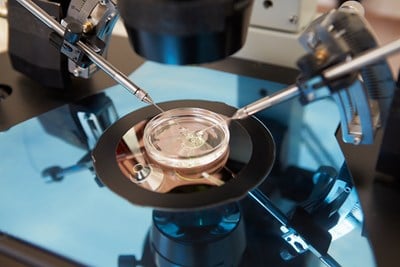If you and your partner want conceive but are struggling with infertility, there are many options available. Although in vitro fertilization, or IVF, has the highest rate of success, it is also very expensive, with each cycle costing over $12,000. Therefore, it is worth looking into other options for fertility treatments before jumping straight into IVF. Here are some other choices that might work for you.
Fertility Medications
The most commonly used fertility medications are clomiphene (Clomid) and gonadotropin. These drugs regulate your reproductive hormones and trigger the release of one or more eggs during each ovulation cycle. Even though these medications can cause uncomfortable side effects such as hot flashes, mood swings, breast tenderness, and nausea, about 80% of women who take Clomid will ovulate in the first three months of treatment. Additionally, 30% to 40% of the women who successfully ovulated were able to conceive by the third treatment cycle.
The price for these medications can vary. Clomid can range from $10 to $100 per month, depending on your insurance coverage. Gonadotropin injections can cost anywhere from $1,000 to $5,000 per month depending on the dosage and duration of your shots.
Intrauterine Insemination
Intrauterine insemination (IUI) is a simple procedure that involves placing a concentrated amount of sperm that has been washed and treated for optimal potency directly into the woman’s uterus using a catheter that passes through the cervix. The success rate ranges from 7% to 16% per cycle, but this rate increases significantly when paired with ovulation-inducing fertility medications and when placement is timed directly after ovulation.
The cost for intrauterine insemination averages about $865 per cycle. It is usually recommended to try IUI at least three to six times before moving on to more complicated methods.
Gamete Intrafallopian Transfer
Gamete Intrafallopian Transfer (GIFT), like IVF, involves harvesting eggs and sperm and mixing them together in a lab. However, instead of fertilizing the egg in the lab, the mixture is injected into the fallopian tubes, where fertilization can happen naturally inside of your body. Though the cost for GIFT usually averages to over $15,000 dollars, with similar success rates to IVF, some people prefer this method for moral reasons, since conception still occurs inside the mother’s womb rather than in a lab.
Gestational Surrogacy
Gestational surrogacy involves allowing another woman to carry your embryo or a donor’s embryo. This may be an option for women who are unable to carry a child on their own because of health reasons. Since gestational surrogacy is not only expensive (upwards of $150,000 for the whole process), but also legally complex and emotionally draining, it requires a lot of time, money, and patience in order to succeed.
The success rate for women who use their own eggs and a gestational carrier in the United States in recent years is about 50% for women aged 34 and younger. Percentages decrease as age increases, with about an 11% success rate for women age 43 and older.




